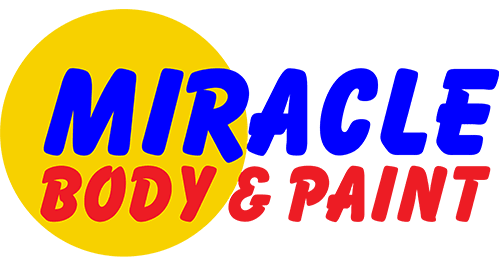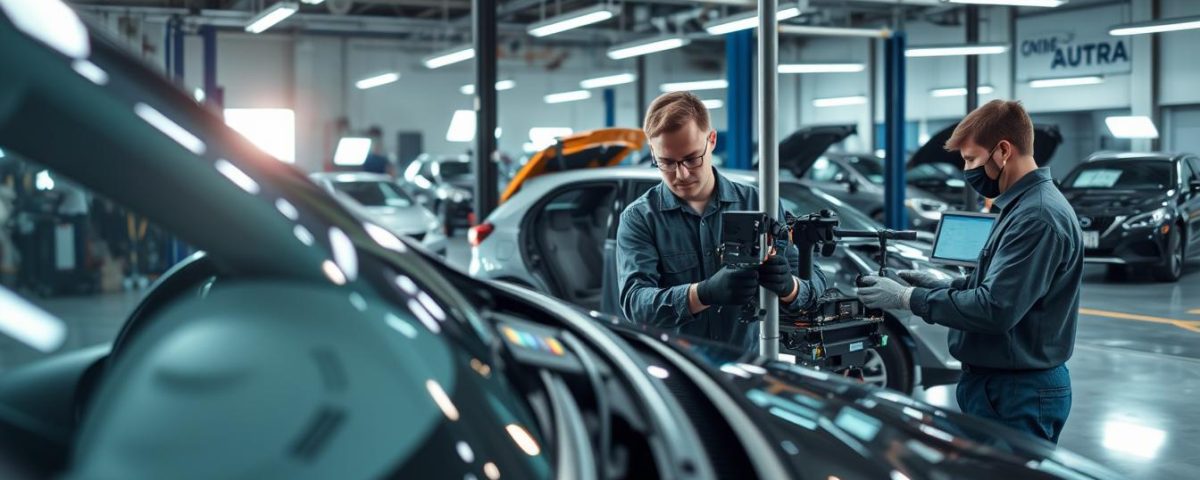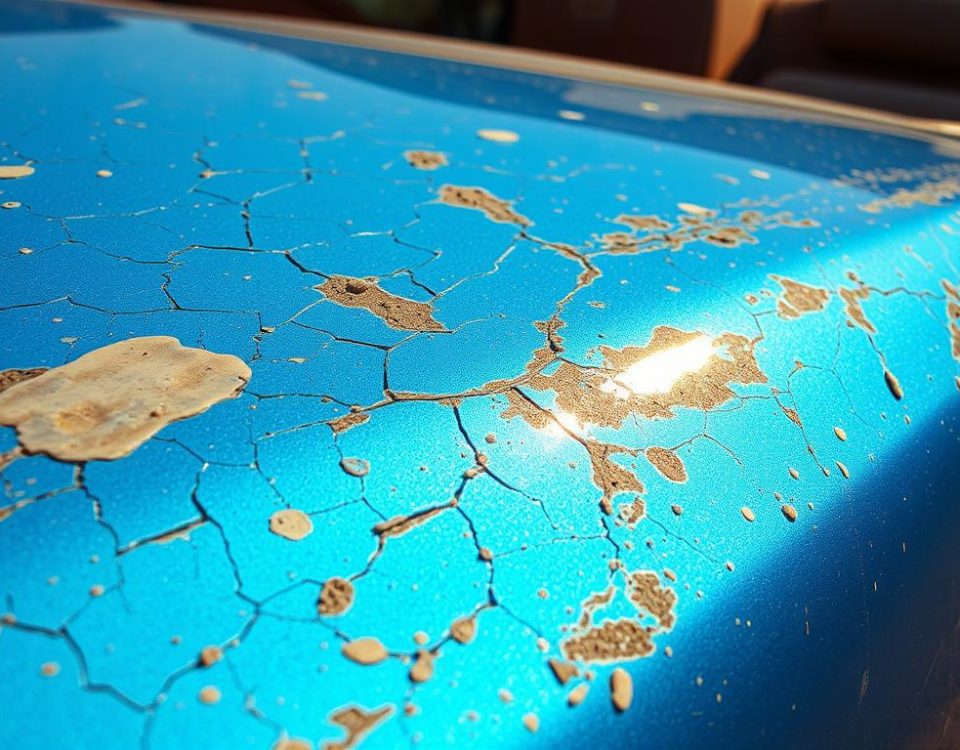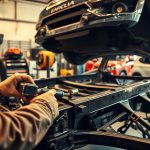
How Frame Repair Protects Your Vehicle’s Safety After a Crash
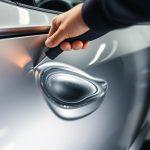
Paintless Dent Repair vs. Traditional Dent Repair: Which Is Best?
If your vehicle hits even a minor object, its driver‑assist systems can shift out of sync. ADAS calibration San Antonio helps restore accurate warnings and proper function after a crash. That step matters because tiny misalignments change how sensors read lanes, distance and hazards.
Proper adas calibration includes diagnostics, software updates, static target work in the shop, and dynamic on‑road checks. Technicians complete post‑repair verification so alerts and interventions work as intended and keep you safe on the road.
Choosing expert repair services matters in san antonio because local driving conditions demand precise tuning. Miracle Body and Paint Collision Center is your local expert for post‑collision work and full system checks, so your vehicle’s safety features return to manufacturer standards.
Key Takeaways
- Even low‑speed collisions can misalign sensors and impair safety systems.
- Proper calibration restores camera and sensor alignment for accurate alerts.
- The process includes diagnostics, software updates, static and dynamic checks.
- Post‑repair verification confirms systems meet manufacturer specs.
- Trust local, experienced services to protect your vehicle and your safety.
Your Safety After a Crash Starts With Precise ADAS Calibration
After a crash, precise post‑repair alignment of your vehicle’s sensors restores the trust you place in its safety systems.
Your vehicle relies on sensors and cameras to read lane lines, distances, and obstacles. Proper adas calibration reduces false alerts and keeps interventions reliable.
Trained technicians begin with pre‑scans and a physical inspection. They perform software updates, then follow OEM steps for static and dynamic calibration to restore full function.
- Realigned sensors help the driver make safer choices on the road in real time.
- Following factory specs ensures systems meet original performance and help reduce nuisance warnings.
- Timely service shortens adjustment periods so your vehicle is ready for daily use after a crash.
Miracle Body and Paint Collision Center makes post‑collision work a core step to protect you and your passengers. Call either San Antonio location to schedule service and ensure vehicle safety.
What Advanced Driver Assistance Systems Do for Your Vehicle
A network of sensors, cameras, radar and lidar works together to reduce surprises while you drive.
Advanced driver assistance features include lane departure warnings, adaptive cruise control, and automatic emergency braking. These tools give real-time feedback and can take action to avoid hazards.
Core features explained
- Lane departure warnings keep you centered and alert you when the vehicle drifts from a lane.
- Adaptive cruise control adjusts speed to maintain safe spacing from traffic ahead.
- Automatic emergency braking reacts to sudden obstacles to lessen impact or stop the car.
How sensors and cameras interpret the road
Sensors and cameras read lane lines, detect vehicles and pedestrians, and measure closing speed. That data feeds into decision logic that triggers alerts or interventions.
| Component | What it senses | Why alignment matters |
|---|---|---|
| Cameras | Lane markings and signs | Misaligned cameras give false lane alerts |
| Radar / Lidar | Distance and closing speed | Incorrect aim affects braking and cruise control |
| Ultrasonic sensors | Close-range obstacles | Poor positioning reduces low-speed detection |
Miracle Body and Paint Collision Center helps you understand which components need attention so driver assistance features stay reliable after repairs.
Why Calibration Is Mandatory After Any Collision, Big or Small
Even a small impact can change the exact angles that let your vehicle read the road correctly. That shift may be too slight to see, but it affects how warnings and automated actions behave.
Restoring accuracy to misaligned sensors and cameras
Any collision can move mounting points or brackets for cameras and sensors. When aim changes, distance and lane data prove unreliable.
Proper adas calibration restores OEM angles and field of view so the system reads lanes and spacing the way it was designed.
Reducing false alerts and ensuring reliable warnings
Without proper calibration, you may get false alerts, delayed braking, or uneven steering help. That undermines your safety and confidence.
- Repairs to panels, bumpers, or windshields must be followed by calibration to keep geometry exact.
- OEMs and insurers often require verification after a collision to confirm correct function.
- Miracle Body and Paint Collision Center includes adas calibration in post-collision planning to protect your safety and confidence.
Common Signs Your Driver Assistance Systems Need Calibration
Watch for new warning lights or odd behavior—your vehicle may be telling you its driver aids need attention.
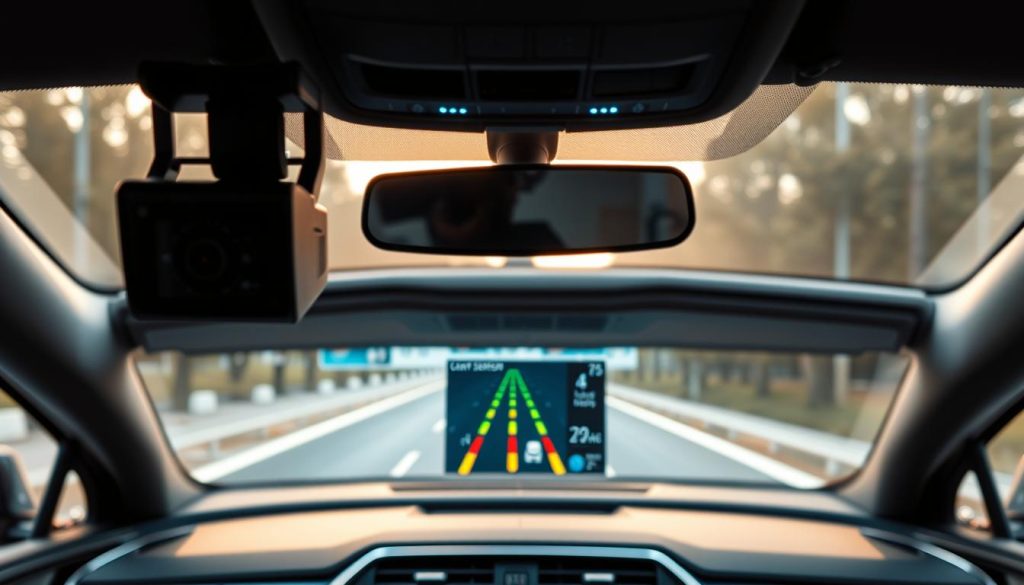
If a warning lamp appears on your dashboard, don’t ignore it. That light often points to system or component faults that affect road performance and safety.
If your car drifts in the lane or steering assist feels inconsistent, the lane-centering function may be off. Small changes matter, especially on long, straight road sections.
- Warning lights: Indicate faults needing a diagnostic scan.
- Lane wandering: Signals camera or alignment issues.
- Adaptive spacing/braking problems: Can mean sensors read distance incorrectly.
- Post-repair changes: Body, grille, or glass work often alters sensor aim.
- Intermittent alerts or reduced range: May point to contamination or misalignment of sensors.
If you notice any of these signs, Miracle Body and Paint Collision Center invites you to schedule a diagnostic to confirm if adas calibration and repairs are needed.
| Sign | What it means | Recommended action |
|---|---|---|
| Dashboard warning light | System detects a fault or mismatch | Run a diagnostic scan and verify software |
| Lane drift or poor lane hold | Camera aim or lane recognition degraded | Inspect camera mounting and perform alignment checks |
| Late or aggressive braking | Sensors reporting distance incorrectly | Clean sensors and test adaptive braking on road |
| New issues after repairs | Repairs changed sensor geometry | Request a post-repair functional check and adjustment |
ADAS Components Most Affected by Impacts and Repairs
Collisions tend to affect certain components that directly feed data to safety systems. When those parts shift, multiple functions can suffer at once.
Cameras, radar, lidar, and ultrasonic sensors
Front and rear bumpers often hide radar and ultrasonic sensors. Even low‑speed hits can move them enough to change range and aim.
Bumpers, grilles, mirrors, and windshield-mounted units
Windshield‑mounted cameras read lane lines and traffic. A small glass shift or replacement can break their alignment.
Mirror modules, side radars, and rear cameras rely on precise angles. Panel or mirror repair can alter those angles quickly.
System modules and software dependencies
Miracle Body and Paint Collision Center inspects hardware and software so your advanced driver assistance systems work as designed.
- Impact-prone bumpers and grilles often need visual and electronic checks.
- Replacing glass or mirrors may require parts initialization and a software update after repair.
- Misaligning one sensor can degrade multiple features across the vehicle’s system.
- We inspect sensors cameras, brackets, and mounting hardware for fit, cleanliness, and readiness.
Static vs. Dynamic Calibration: What’s the Difference?
Restoring sensor aim requires both precise bench work and real-world validation on the road.
Static: in-shop targets and precise alignment
Static work uses target boards, laser measurements, and jig fixtures to set exact angles for cameras and sensors.
Trained technicians follow OEM specs and use specialized equipment to place sensors within tight tolerances.
Dynamic: on-road procedures to validate performance
Dynamic checks confirm that systems behave correctly while driving on prescribed routes and speeds.
This step proves real-world detection, lets software adapt, and catches issues a bench test can miss.
- Static fixes aim and field of view at the shop.
- Dynamic checks verify function on the road under normal driving conditions.
- Some makes need static-only steps; others require both to meet OEM rules.
| Method | Primary goal | When used |
|---|---|---|
| Static | Exact sensor alignment | After mount or glass work |
| Dynamic | Real-world validation | After static or when required by maker |
| Combined | Complete system readiness | Most post-repair scenarios |
Miracle Body and Paint Collision Center performs both steps using calibrated equipment so your vehicle’s driver aids return to proper function.
Our Step-by-Step Calibration Process at Miracle Body and Paint Collision Center
You get a consistent, OEM‑based process that restores system accuracy after repair.
Pre-scan diagnostics and physical inspection
We begin with a pre-scan that reads all ADAS codes and records system faults. A physical inspection follows to spot damaged components, loose mounts, or windshield issues.
Software updates and OEM specifications
Next, our team updates system software to the latest OEM files so parameters match manufacturer guidance. This step ensures the following procedures use current calibration services and routines.
Calibration execution and post-repair verification
Technicians perform static alignment using controlled targets to set sensor and camera angles precisely.
Then we run dynamic validation on the road to confirm reliable behavior in turns, lane changes, and traffic. After repair, you receive post-repair verification and documentation that proves accuracy.
- Pre-scan and physical check of sensors and components
- Software updates to OEM specs
- Static target alignment and dynamic road validation
- Windshield clarity and mounting integrity review
- Final verification and documentation of results
Our trained technicians and support team provide end-to-end calibration services and invite you to schedule at either San Antonio location listed at the end of this article.
Specialized Equipment and Expert Technicians You Can Trust
When exact measurements matter, the right equipment and an experienced team keep your vehicle reliable.
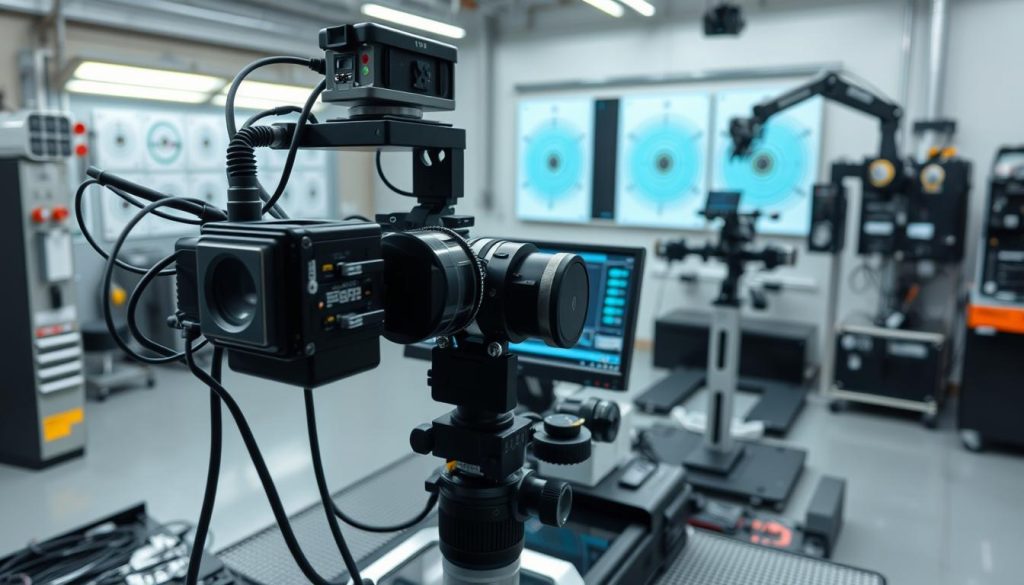
Miracle Body and Paint Collision Center invests in OEM‑aligned targets, precision measuring systems, and software that talks directly with ADAS modules.
Your safety depends on people who follow strict workflows. Our technicians read diagnostic data, set up target arrays, and run routines that reduce variability. This helps ensure repeatable outcomes after every repair.
- Specialized equipment aligns targets and verifies exact measurements for consistent results.
- Our technicians interpret faults, execute setup, and complete manufacturer steps efficiently.
- The team follows standardized procedures so your adas behaves predictably after repairs.
- We provide adas calibration services and related services using validated tools and software in san antonio.
| Tool | Purpose | Benefit |
|---|---|---|
| OEM target boards | Set camera and sensor aim | Exact field of view and repeatable setup |
| Precision measuring system | Verify vehicle geometry | Reduces rework and shortens downtime |
| Diagnostic software | Communicate with ADAS modules | Ensures correct parameter updates and tests |
Call our San Antonio teams to schedule service and confirm your vehicle gets OEM‑grade attention.
Windshield Replacement, Unibody Repair, and How They Impact ADAS
Windshield replacement or structural repair can subtly alter how your vehicle’s forward cameras and sensors see the road.
Even a slight change in glass angle affects camera clarity and lane recognition. That shift can cause false alerts or missed warnings until you get proper calibration.
Unibody work and bumper repair often move mounts and brackets. When mounts shift, sensors no longer report distance and position correctly. These components must be checked and adjusted before you rely on system feedback.
- Why glass matters: A replaced windshield can change optical aim and must be verified.
- Structural and bumper repair: Repositioned sensors need precise adjustment for accurate detection.
- Cleanliness: Contaminants on glass or sensor covers must be removed before testing.
- Validation: Many vehicles need both static and dynamic procedures to confirm performance.
Miracle Body and Paint Collision Center performs post‑repair calibration after glass, bumper, and frame work so your vehicle resumes timely alerts and interventions.
Learn more in our guide on why windshield work requires post-repair checks.
Insurance, Documentation, and Legal Compliance in Texas
Insurance claims move faster when you have clear post-repair records that show systems were tested and verified.
You receive detailed reports after every repair. These documents show tests, software updates, and final verification for your car’s driver assistance systems.
Miracle Body and Paint Collision Center keeps copies you can share with your insurer to support a claim and to prove compliance with Texas safety expectations.
- You get signed verification and technical notes to keep with your vehicle records.
- Reports explain how calibration and tests support vehicle safety and meet OEM rules.
- We coordinate timing with your claim so repair and verification align and reduce delays.
- Proper records protect you by showing advanced driver assistance checks were performed after the collision.
| Document | Purpose | When to use |
|---|---|---|
| Post-repair report | Shows what tests were run and results | Submit with insurance claim |
| Verification certificate | Confirms systems meet OEM specs | Keep with your car title and service history |
| Service coordination note | Aligns repair dates and technical work | Use to confirm timelines for liability or warranty |
Call either san antonio location to request copies or to learn how our services help ensure vehicle performance and legal compliance after a collision.
Benefits You Feel on the Road: Confidence, Accuracy, and Performance
You’ll notice the difference the moment you drive away—systems respond more predictably and smoothly.
Miracle Body and Paint Collision Center focuses on restoring smooth, predictable system behavior so you feel confident immediately after pickup.
Better braking, lane control, and adaptive cruise consistency
You experience smoother braking interventions and more consistent lane support when work is completed to spec.
Proper setup improves adaptive cruise spacing and cruise control behavior, which reduces driver workload on highway driving.
Reduced risk of accidents and unexpected system behavior
You’ll notice fewer nuisance alerts and more reliable features, which enhances overall performance and comfort.
- Smoother braking: Timely, measured responses help you avoid abrupt stops.
- Consistent lane support: Better lane hold reduces fatigue on long trips.
- Fewer false alerts: Reliable features mean less distraction and more trust in the system.
- Lower accident risk: Accurate behavior cuts down chances of late detections or inconsistent responses.
Result: clearer feedback from your vehicle on the road and a more confident driving experience for daily commutes, road trips, and busy traffic. Proper adas setup helps ensure vehicle systems perform as intended so you can focus on the drive.
| Benefit | What you feel | Why it matters |
|---|---|---|
| Braking support | Smoother, steadier stops | Reduces abrupt maneuvers and stress |
| Lane control | Cleaner lane hold | Less drifting and fewer corrections |
| Adaptive cruise | Stable spacing | Lower driver workload on highways |
When to Schedule Calibration Beyond Collisions
You should plan a post‑repair check whenever work might change your vehicle’s sensor aim or sightlines.
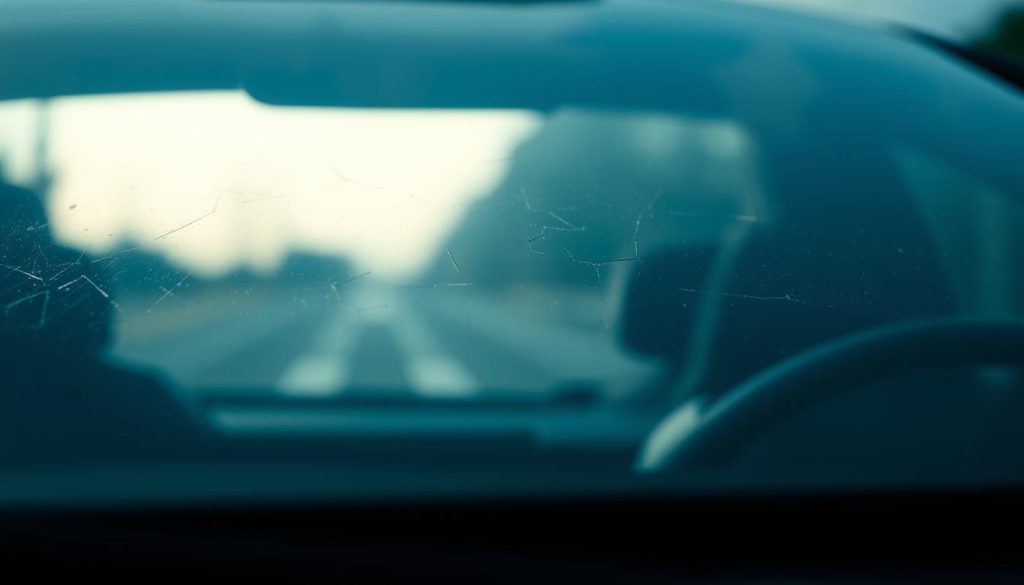
Miracle Body and Paint Collision Center recommends booking adas calibration after windshield service, major body repairs, or any event that could shift mounts.
Even without accidents or a clear collision, suspension work, wheel alignments, ride‑height changes, or new tires can alter angles your systems depend on. That change may be subtle but important.
- Windshield replacement: Camera views and focus can shift; schedule a check.
- Suspension or alignment work: Ride height or geometry changes affect aim.
- Major body or bumper repairs: Sensors cameras often move during panel work.
- New warnings or odd behavior: If your car drifts or shows alerts, book diagnostic and adas calibration.
Our calibration services validate proper function after the work is complete so your vehicle is ready for daily use and your driver assistance features perform reliably.
ADAS Calibration Services Near You in San Antonio
Find professional support nearby so your vehicle’s safety systems perform as they should after repair.
You get convenient access to adas calibration services in san antonio with trained technicians and proper equipment. Our team uses validated target systems and updated software to restore sensor aim across many vehicle makes and models.
Dependable results come from a repeatable, OEM-driven routine. Technicians set targets, run module updates, and verify performance with on‑road checks so systems behave predictably.
- Convenient local services with trained technicians and certified equipment.
- OEM-driven routines that cover a wide range of vehicles accurately.
- Updated software and validated target setups ensure precise results.
- Documentation you can share with your insurer for claims or records.
- Easy scheduling to get your adas restored quickly and correctly in san antonio.
Miracle Body and Paint Collision Center provides local access with two San Antonio locations listed at the end of this article. Call today to schedule your calibration and get documented verification for your vehicle.
Choose Miracle Body and Paint Collision Center: Local Expertise, OEM-Grade Precision
When precision matters, choose a team that combines technical skill with OEM procedures to return your vehicle to factory intent.
Miracle Body and Paint Collision Center invites you to hire our local experts for OEM‑grade adas calibration and collision repair. Our process begins with diagnostics and software updates, then includes both static target work and on‑road checks to confirm performance.
We document every step so you have proof for insurance and warranty purposes. That paperwork shows tests run, software versions installed, and final verification results.
- Local team: committed to OEM procedures for adas calibration and verification.
- Complete process: diagnostics, software updates, and precise calibration for consistent performance after repair.
- Clear records: step‑by‑step documentation you can share with your insurer.
- Reliable driver assistance: we prioritize predictable vehicle behavior from day one.
- Improved performance: expect restored confidence knowing your vehicle meets manufacturer intent.
Call to schedule with our team and see both San Antonio locations below for fast, documented service and verified results.
Two San Antonio Locations to Serve You
Two convenient locations make it easy to get post‑repair service near work or home.
Miracle Body and Paint Collision Center offers full diagnostics, adas calibration, and post‑repair verification at both shops. Call to schedule your calibration or collision repair today.
North West San Antonio – Leon Valley
You can choose the Leon Valley location for convenient scheduling and a quick turnaround. The shop handles collision repair and adas calibration in‑house.
North East San Antonio
The Northeast shop provides the same services close to many commuting routes. Both sites welcome walk‑ins and appointments.
- Choose either location for faster service and minimal downtime.
- In‑house capability means diagnostics, alignment work, and verification all happen under one roof.
- We coordinate with your insurer to streamline the visit from estimate to delivery.
- Advisors guide you so your car is returned ready for safe driving.
- Two local sites make it easier to maintain your vehicles without long delays.
| Location | Services | Best for |
|---|---|---|
| Leon Valley | Diagnostics, adas calibration, post‑repair verification | Quick drop‑off near NW routes |
| Northeast | Diagnostics, adas calibration, post‑repair verification | Accessible for NE commuters |
Conclusion
, Final testing after collision work proves that your vehicle will respond predictably in everyday driving.
Post-collision adas calibration restores system function, reduces false alerts, and supports insurance and legal documentation. Our process includes pre-scan diagnostics, a physical inspection, software updates, static and dynamic alignment, and post-repair verification.
Proper calibration protects your safety and brings vehicle performance back to manufacturer intent. Hire Miracle Body and Paint Collision Center to restore your car and get documented proof that systems meet OEM expectations.
Two locations to serve you: North West — Leon Valley, (210) 680-1987, 6217 Grissom Rd., San Antonio, TX 78238. North East — (210) 858-3630, 4650 Walzem Rd, San Antonio, TX 78218.

